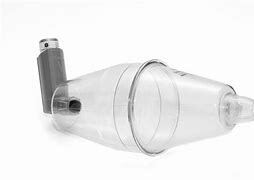Getting the right amount of an inhaled medication into the lungs has always been a difficult process as the upper airways are designed specifically to protect the lungs from such foreign particles. Subsequently, hand-held inhalers are notoriously wasteful.
Inhalers require the user to press the device at the right time and to take in the right sized breath. Inhale too fast and most of the drug flies to the back of the mouth and sticks to the lining of the throat; too slow and the drug falls out of suspension in the mouth. Physiotherapists would spend hours teaching patients good inhaler technique, especially children and the cognitively impaired.
The process of inhalation was made much easier with a simple chamber, known as a large volume ‘spacer’, or a one-way ‘valved holding chamber’ that sat between the inhaler and the patients mouth as it reduced the need to get the timing exactly right. It is said that their original design was inspired by a 13-year-old girl who wanted to know why her nebuliser couldn’t work as efficiently as her hairspray.
The bigger the chamber, the better the effect, but the bulk of a large spacer has resulted in patchy uptake, and many people simply default to their inhaler for convenience and to avoid embarrassment when they go out in public.
Description provided by David Nicholls of New Zealand.
References:
Callard preedy E & Prokopovich P. 2013. History of inhaler devices. In Inhaler Devices (pp. 13-28). Elsevier. https://doi.org/10.1533/9780857098696.1.13

